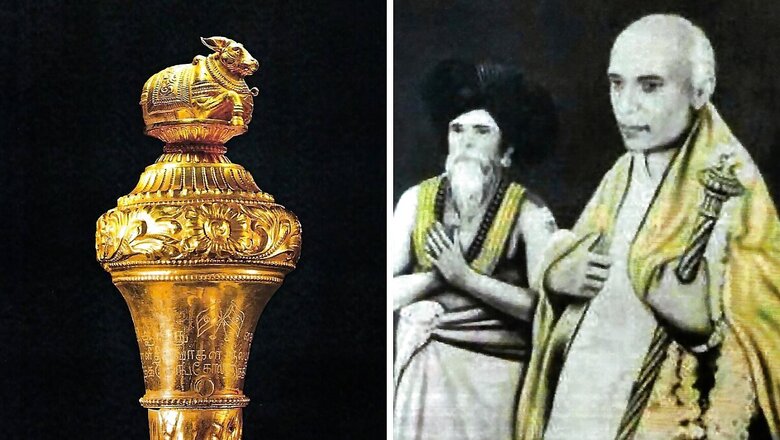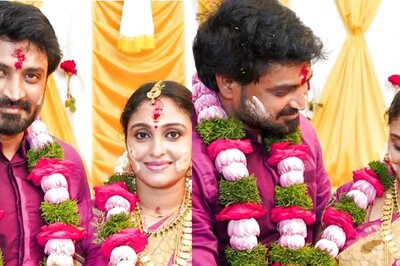
views
Twenty opposition parties, including the Congress, Trinamool Congress (TMC), Dravida Munnetra Kazhagam (DMK), Aam Aadmi Party (AAP), Nationalist Congress Party (NCP), Communist Party of India (Marxist) (CPIM), Bharat Rashtra Samithi (BRS) and Samajwadi Party (SP), have decided to boycott the May 28 inaugural function of the new Parliament building.
Their argument: The President of India, not the Prime Minister, should inaugurate it. Many of them were not even in favour of the new Parliament building.
The return of ‘sengol’, used to represent India’s victory over its colonial past, as a national symbol of Amrit Kaal could soon start a political debate. With its use on August 14-15, 1947, and afterwards, symbolically, sengol had become one of the most powerful visual national emblems to mark India’s journey ahead from a colonial nation to an independent country.
'செங்கோல்', நியாயமான மற்றும் சமத்துவமான நிர்வாகத்தின் அடையாளத்தை குறிக்கிறது.இது அமிர்த காலத்தின் தேசிய அடையாளமாக, மக்களவை சபாநாயகர் மேடைக்கு அருகில் பிரகாசிக்கும். இது புதிய இந்தியா, உலகில் அதன் சரியான இடத்தைப் பெறுவதற்கு சாட்சியாக இருக்கும்.#SengolAtNewParliment pic.twitter.com/6gDCJmszCC
— Amit Shah (@AmitShah) May 24, 2023
The other two were India’s national flag and Pandit Jawaharlal Nehru’s ‘tryst with the destiny’ speech.
India knows about the other two, but not about sengol.
WHAT IS A SENGOL?
Sengol is a Tamil word used for sceptre or royal stick. The concept of sengol means the rule of justice in Tamil Nadu’s history. Used by Chola and other kings ruling the geographical territory in the past, a sengol symbolized power transfer to a new king. The Congress and Nehru used the historical Tamil tradition and the Chola royal stick to anchor it with India’s tryst with destiny, a liberation from the centuries-old colonial rule.
S Gurumurthy, a senior journalist and editor of the Tamil political weekly Tughlak magazine and a Rashtriya Swayamsevak Sangh (RSS) ideologue, posted about the sengol in a series of tweets almost a year ago, on May 3, 2022. He said Lord Mountbatten had asked Pandit Nehru about a possible ritual by which the transfer of power should be done from British India to a sovereign India.
Nehru asked C Rajagopalachari for suggestions. Rajagopalachari suggested the tradition used by the Chola kings. Nehru accepted it. Following it, a Tamil Nadu mutt prepared the gold plated sengol with Nandi atop. The incident has been reported in some regional media reports.
PM Modi will dedicate the newly constructed building of Parliament to the nation on 28th May. A historical event is being revived on this occasion. The historic sceptre, 'Sengol', will be placed in new Parliament building. It was used on August 14, 1947, by PM Nehru when the… pic.twitter.com/NJnsdjNfrN— ANI (@ANI) May 24, 2023
QUESTIONS FOR DMK AND CONGRESS
The move to reinstall the sengol in the Parliament House again may raise questions for the Congress on why such a potent symbol was ignored altogether. Symbolizing the Indian victory, the Parliament House was its original place, then why was it kept in an Allahabad Museum? Questions will be raised on why this symbol of independence was ignored in academic textbooks and historical discourses post 1947? Was it intentional? What were the reasons?
The re-installation might also put DMK in a difficult situation. Ideally, critics might say DMK should question the Congress for ignoring rich Tamil history, tradition and culture and instead should join the new Parliament house opening ceremony.
Prime Minister Shri Narendra Modi’s decision to install the sacred Sengol in the New Parliament building is a historic moment. The sacred Sengol is of national significance and holds historical importance. It was first received by Jawaharlal Nehru on August 14, 1947, in presence… pic.twitter.com/qamYNmtd6p— Jagat Prakash Nadda (@JPNadda) May 24, 2023
Sengol could have been a powerful visual symbol post 1947 to show India’s journey as an independent nation, but until the Bharatiya Janata Party’s (BJP) press conference on Wednesday, most in India and even Tamil Nadu, were unaware of the 1947 incident.
The DMK, a Congress ally, should question its partner on it. After all, the DMK government in Tamil Nadu decided to mark November 3, the birth anniversary of the 10th-century Dravidian ruler Raja Raja Chola, as a state event last year and sengol is a Chola-era relic.




















Comments
0 comment